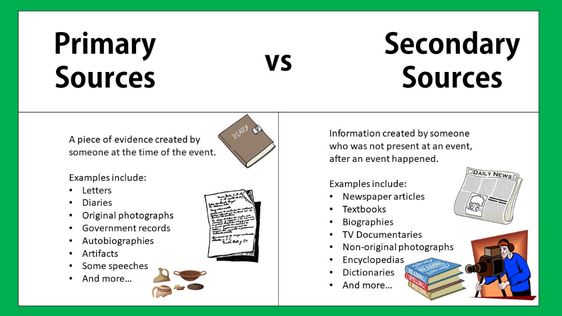
Dissertations are among the most common types of academic papers that students write in undergraduate, degree, Master’s and even PhD programs. Unlike essays, dissertation writing is research intensive and has very unique guidelines that students must follow when doing the assignments.
Dissertation writing usually occurs in stages since the paper comprises multiple sections. The main sections of a typical dissertation include Title, Abstract, Introduction, Literature Review, Methodology, Results, Discussion and Conclusion.
While writing each section of the dissertation takes effort, the Methodology section is quite demanding. The following post will focus on the Methodology section, offering guidelines on how to conduct proper research for your dissertation.
The Key Research Methods for Dissertation Writing
The guidelines for dissertation writing outline two key research methods that students can use to generate information for the paper. The research methods include primary and secondary research.
Primary Research
Primary research for dissertation writing requires you to conduct your own experiments and surveys to gain knowledge about the topic under consideration. As the name suggests, the process entails collecting new data that has not been gathered before. Various primary research methods can be used including interviews, surveys and observations.
One of the advantages of choosing primary research for your dissertation is that it is very specific. The research exclusively focuses on the particular issue or topic under investigation, without deviating into other related subjects. The research focuses on gaining an in-depth analysis of a specific problem.
Various approaches can be used when gathering data through primary research. The following are the main primary research methods.
- Interviews
Interviews can be conducted through face to face interaction or by phone. The former usually generates better responses because it allows for a more personal approach. However, you should also remember the success of face to face interviews heavily relies on the researcher’s ability to ask the right questions. Face-to-face interviews require open-ended questions to help the researcher in gaining in-depth insights into the respondents’ opinions and perceptions.
- Online surveys
Surveys have come a long way from the days of pen and paper. Many researchers today use online surveys to gather information with much greater convenience. That is mainly because the respondents can complete the surveys from anywhere. The surveys can be sent via emails or as documents that the respondents can simply fill out online.
In the age of digitization that we live in today, respondents can easily retrieve the surveys and complete them through smartphones, tablets, laptops and computers.
It is advisable to use a mix of both open-ended and closed-ended questions. However, the survey should not be very long to attract respondents. You may also want to consider issuing some form of reward to the respondents who successfully complete filling out the surveys.
- Focus groups
Focus groups can also be quite resourceful when doing research for dissertation writing. They mainly comprise small groups of about 6 to 10 individuals. Focus groups mainly bring together experts in the particular subject or topic under investigation.
A focus group usually has a moderator who controls the discussions among the members. It is a great way for businesses and organisations to identify niche markets and gain insights into specific consumer groups.
- Observations
This is a primary research method where there is no direct interaction between the researcher and the respondent. The job of the researcher is to observe the responses and reactions of the respondent and take notes.
Tips for Collecting Data Through Primary Research
- Design and plan your chosen data collection strategy
- Identify and determine how to deal with any ethical issues related to your research
- Conduct a test or pilot questionnaire first to find out if you may need to make any changes.
- Identify your sample size and control groups
- Have an alternative plan in case your respondents are not willing to take part in the study.
Secondary Research
Unlike primary research, secondary research requires you to analyse and interpret existing data, literature and information. The main element that distinguishes secondary research from primary research is that the former involves the use of existing data. The role of the researcher is to determine how the past data informs the current study.
Secondary research is easier to conduct than primary research because the researcher is not highly involved in the actual process of information gathering. Besides, secondary research takes less time and resources to complete. However, it allows the researcher access to a wide scope of data.
Also known as desk research, secondary research entails collecting data from multiple sources. The sources can either be internal or external including the internet, organizations and government statistics. The sources come in several formats including published reports, datasets and survey responses.
External data sources are ideal when you are looking to fill gaps in your knowledge and find information on a new topic. Nonetheless, the internet is increasingly becoming the most preferred platform for secondary research, used by students worldwide.
Guidelines for Collecting Data Through Secondary Research
To succeed in collecting secondary data, whether from the internet or other sources, you must follow specific steps. Here’s how to generate data for dissertation writing through secondary research.
- Identify and define the topic of research
- Create a list of the relevant sources that can provide the needed information
- Access and collect the data into an organised system
- Combine the generated data and compare the results
- Analyse the information and explore further
Choosing Between Primary Research and Secondary Research Methods

Every dissertation writing assignment usually comes with a set of instructions for students. Going through the instructions is the first step towards crafting a good dissertation. Sometimes, you may be instructed to use a specific research method for the dissertation. In such a situation, you will not have the luxury of choosing your own preferred research method.
Your supervisor may also leave it to you to decide on the research method to use. In such instances, you can either choose one method or combine both primary and secondary research methods to generate information for the paper. Each method has unique advantages and disadvantages that you should consider when making the choice.
Nonetheless, you should go for a research method that will enable you to generate all the necessary information that you need within the given time-frame and resources.
The Best Dissertation Writing Services
Exemplarydissertations is a premium dissertation writing platform that you can always count on to deliver high quality academic papers. We can assist you with topic suggestions, research and also write the dissertation to the best standards that will no doubt elevate your performance to the next level.